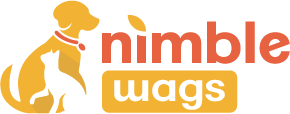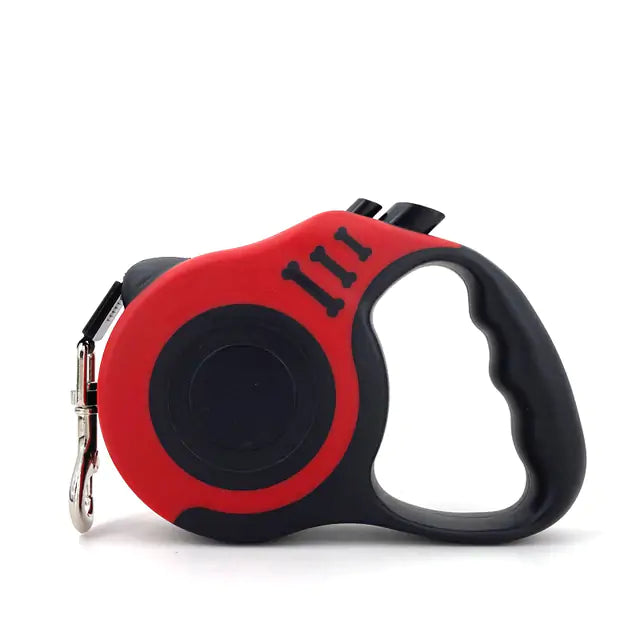When it comes to ensuring the safety and happiness of your furry friend during walks, choosing the right dog leash is imperative. Dog leashes not only help in controlling your pet but also contribute significantly to their training and overall behavior. With a myriad of options available in the market, it can be overwhelming to decide which leash would be the perfect fit for your pet. This guide will walk you through the essentials of selecting the best dog leashes, exploring different styles, materials, and tips for a safe and enjoyable walking experience.
Whether you are a new pet owner or looking to upgrade your current dog leash, understanding the various types and their specific uses can make a world of difference. From retractable leashes to traditional ones, each has its unique advantages. Our goal is to help you make an informed decision that caters to your dog's needs and your preferences.
Shop Now to explore our premium collection of dog leashes and find the perfect match for your canine companion.
Types of Dog Leashes

Dog leashes come in a variety of types, each designed to serve different purposes and cater to various needs. Understanding these types can help you choose the best leash for your dog. Here are some of the most popular types of dog leashes:
- Standard Leashes: These are the most common type of leashes. They are typically made of nylon or leather and come in various lengths, usually ranging from 4 to 8 feet. Standard leashes are great for everyday walks and basic training.
- Retractable Leashes: These leashes feature a mechanism that allows the leash to extend and retract, giving your dog more freedom to explore. They come with a locking feature to control the length. However, they may not be suitable for dogs that tend to pull or for crowded areas.
- Adjustable Leashes: Similar to standard leashes but with multiple loops or clips, adjustable leashes allow you to change the length as needed. They are versatile and can be used for different training purposes.
- Chain Leashes: Made of metal chains, these leashes are durable and ideal for dogs that tend to chew on their leashes. However, they can be heavy and less comfortable to hold.
- Martingale Leashes: These are combination leash-collar systems designed to provide more control without choking the dog. They are excellent for training and for dogs that tend to slip out of their collars.
- Hands-Free Leashes: Perfect for joggers or people with active lifestyles, these leashes can be worn around the waist, allowing you to keep your hands free while walking or running with your dog.
Choosing the right type of leash depends on your dog's behavior, size, and your specific needs. Each type offers unique benefits, so consider your options carefully to ensure a safe and enjoyable experience for both you and your furry friend.
Materials and Durability

The material of a dog leash plays a crucial role in its durability and performance. Selecting the right material ensures that the leash can withstand the demands of daily use while providing comfort and safety for both you and your dog. Here are some common materials used in dog leashes and their characteristics:
- Nylon: Nylon leashes are popular due to their affordability, strength, and lightweight nature. They come in a variety of colors and patterns, making them a versatile choice. However, they can cause friction burns if your dog pulls excessively, and they may absorb odors over time.
- Leather: Leather leashes are known for their durability and classic appearance. They become softer and more comfortable with use, and they are less likely to cause friction burns. Although they are more expensive than nylon, they are a long-lasting investment. Proper care, such as regular conditioning, is required to maintain their quality.
- Chain: Chain leashes are extremely durable and resistant to chewing, making them ideal for dogs that tend to gnaw on their leashes. However, they can be heavy and less comfortable to handle. Additionally, they may not be suitable for smaller dogs due to their weight.
- Rope: Rope leashes are strong and often used for larger dogs or for activities like hiking. They provide a good grip and are less likely to cause friction burns. Rope leashes are also available in various thicknesses and lengths, offering flexibility for different needs.
- Biothane: Biothane leashes are made from a polyester webbing coated with a waterproof material. They are durable, easy to clean, and resistant to odors and mildew. Biothane leashes offer the flexibility of nylon with the durability of leather, making them a great choice for various weather conditions.
When selecting a leash material, consider your dog's behavior, the environment you'll be using the leash in, and your personal preferences. A durable and comfortable leash can make walks more enjoyable and safer for both you and your furry friend.
Comfort and Safety Features
When choosing a dog leash, it's essential to consider the comfort and safety features to ensure enjoyable and secure walks for both you and your pet. The right features can make a significant difference in handling and controlling your dog, especially in various environments. Here are some key comfort and safety features to look for:- Padded Handles: Padded handles provide extra comfort for your hands, reducing the strain and discomfort that can occur during long walks or if your dog tends to pull. Look for handles with soft, cushioned padding to prevent blisters and enhance your grip.
- Reflective Stitching: Reflective stitching or materials on the leash increase visibility during low-light conditions, such as early morning or evening walks. This feature enhances safety by making you and your dog more noticeable to drivers and other pedestrians.
- Traffic Handles: Traffic handles are additional handles located closer to the leash's clip. They offer extra control in high-traffic areas or situations where you need to keep your dog close. This feature is particularly useful for larger dogs or those that may become easily distracted.
- Swivel Clips: Swivel clips prevent the leash from tangling by allowing it to rotate freely as your dog moves. This feature ensures a smoother walking experience and reduces the risk of the leash twisting around your dog's legs.
- Bungee Sections: Some leashes come with bungee sections that provide shock absorption. These sections stretch slightly when your dog pulls, reducing the impact on both you and your pet. Bungee leashes are ideal for energetic dogs that tend to lunge or pull suddenly.
- Quick-Release Buckles: Quick-release buckles allow for easy attachment and detachment of the leash. This feature is convenient for quickly securing your dog or releasing them in case of emergencies.
Incorporating these comfort and safety features into your leash choice can enhance the overall walking experience, making it more pleasant and secure for both you and your furry friend. Always prioritize features that match your dog's behavior and your specific needs to ensure the best fit.
Choosing the Right Leash

Selecting the right leash for your dog involves considering a range of factors that ensure both you and your pet have a safe and enjoyable experience. Here are some key aspects to consider when choosing the perfect leash:
- Leash Length: The length of the leash is crucial for different activities. Standard leash lengths range from 4 to 6 feet and are ideal for casual walks and basic training. Longer leashes, such as 10 to 15 feet, are suitable for giving your dog more freedom while still maintaining control. For activities like hiking or running, retractable leashes offer adjustable lengths to accommodate varying levels of distance and freedom.
- Material: The material of the leash affects its durability and comfort. Nylon leashes are lightweight and strong, making them suitable for everyday use. Leather leashes are durable and soft, offering a classic look and feel that improves with age. For those seeking eco-friendly options, leashes made from recycled materials or natural fibers are available.
- Closure Type: The type of closure on the leash can impact its ease of use and security. Snap closures are quick and easy to attach, while carabiner-style closures offer added security with a locking mechanism. Ensure the closure is sturdy enough to handle your dog's strength and activity level.
- Purpose: Consider the primary purpose of the leash. For training purposes, a shorter leash provides better control and immediate feedback. For casual walks, a standard leash is usually sufficient. If you're into outdoor adventures, a longer or retractable leash might be more appropriate to allow your dog to explore while staying safe.
- Dog's Size and Strength: Your dog's size and strength will influence the type of leash you need. Larger, stronger dogs require thicker, more robust leashes to ensure they don't snap under pressure. Smaller dogs may benefit from lighter, thinner leashes that are easier for them to manage.
- Special Features: Look for additional features that cater to your needs, such as padded handles for comfort, reflective materials for visibility, or multiple attachment points for versatility. These features can enhance the functionality and convenience of the leash.
By considering these factors, you can choose a leash that fits your dog's needs and your lifestyle. A well-selected leash not only ensures safety and control but also enhances the bonding experience between you and your furry friend.
Care and Maintenance Tips

Proper care and maintenance of your dog leash are essential to ensure its longevity and effectiveness. A well-maintained leash not only provides better control but also keeps your furry friend safe during walks. Here are some valuable tips for leash care and maintenance:
- Regular Inspection: Frequently check your leash for signs of wear and tear. Look for fraying, cracks, or weakened areas, especially if your dog tends to pull or chew on the leash. Identifying and addressing these issues early on can prevent potential accidents.
- Cleaning: Keep your leash clean by washing it regularly. For nylon leashes, use mild soap and warm water to remove dirt and grime. Leather leashes require special leather cleaner and conditioner to maintain their suppleness and prevent cracking. Allow the leash to air dry completely before using it again.
- Storage: Store your leash in a dry, cool place away from direct sunlight when not in use. Excessive heat and moisture can weaken the material and cause it to deteriorate faster. Avoid leaving the leash outside or in areas where it can be exposed to harsh weather conditions.
- Avoid Chewing: Discourage your dog from chewing on the leash by providing proper chew toys. Chewing can weaken the leash and pose a safety risk. If your dog has a habit of chewing, consider investing in a more durable material like reinforced nylon or chain leashes.
- Rotate Leashes: If you use your leash frequently, consider rotating between two or more leashes. This practice allows each leash to rest and recover from wear, extending their overall lifespan.
- Replace When Necessary: No matter how well you care for your leash, it will eventually need to be replaced. Pay attention to the signs of significant wear and don't hesitate to invest in a new leash to ensure your dog's safety.
By following these care and maintenance tips, you can keep your dog's leash in top condition, ensuring safe and enjoyable walks for years to come. Ready to find the perfect leash for your furry friend? Shop Now at Nimble Wags and explore our range of high-quality dog leashes designed for every need!




